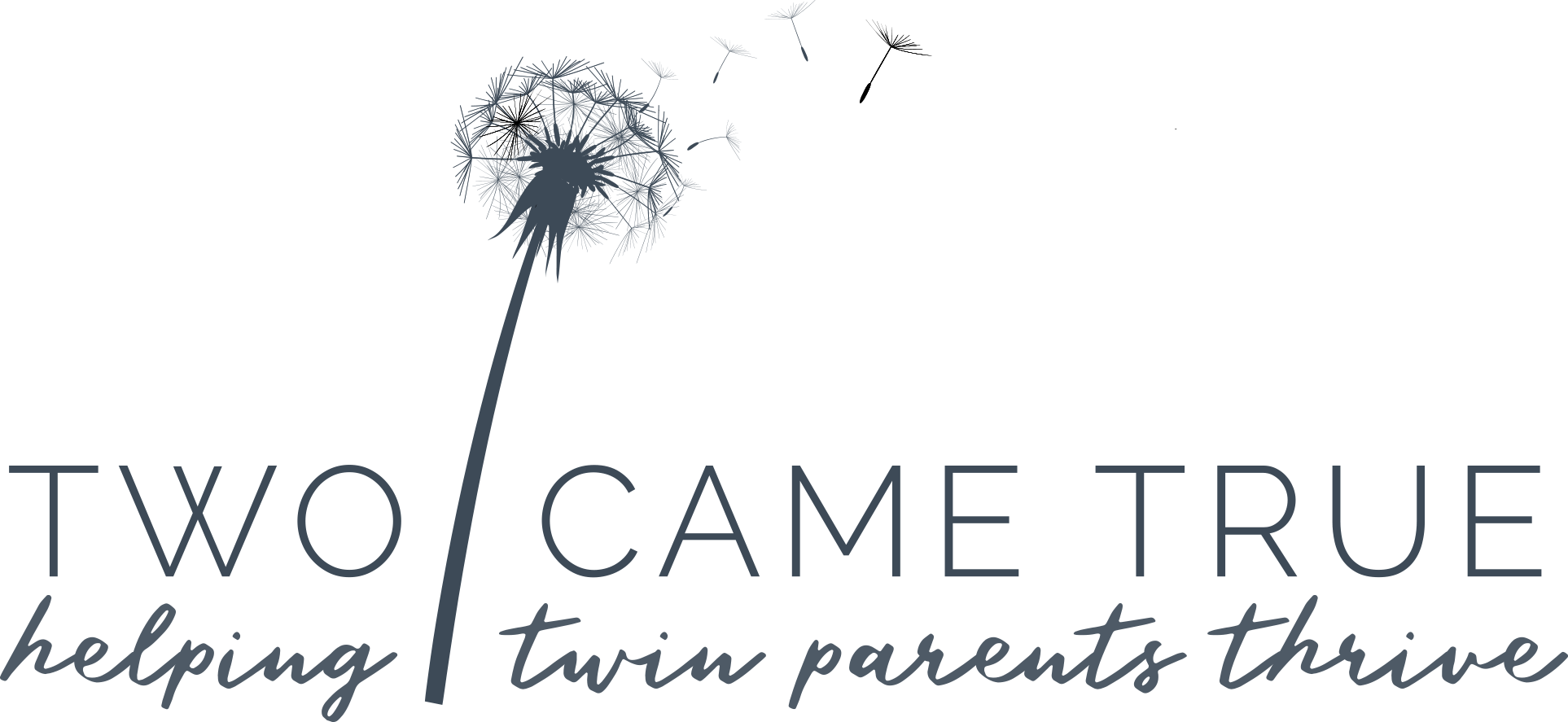
As moms of twins, nap time is one of our favorite times of the day.
Don’t get us wrong, we LOVE being with our children and making memories with them each day, but believe us, some uninterrupted time to sit, breathe or catch up on our to-do lists is a necessity for every mom.
When we brought our twins home, we knew rigid schedules and routines were non-negotiable. There was a lot of research and planning as we prepared for our little bundles of joy, but the one thing that we weren’t prepared to handle were SHORT NAPS! We naively thought that babies just came home as napping champions!
Getting TWO babies to nap at the same time was a monumental task in itself, which is why it drove us insane to hear our babies’ waking up right after we had tiptoed out of their room and finally reheated our coffee!
Short naps are extremely frustrating for parents for a number of reasons that we don’t need to outline for you…because well, if you’re reading this, we are pretty sure you are living that nightmare right now.
Fear not, mama! Short naps won’t last forever if you focus on these short nap solutions:
Before we dive into our tips and tricks, we want to address what exactly constitutes a short nap. A nap is considered short if it is less than an hour, usually meaning that your babies are waking up after 20-45 minutes.
- If your babies are sleeping 30 minutes or less, you will likely have cranky little ones on your hands.
- Babies who are waking up after about 45 minutes may have trouble transitioning through a sleep cycle and soothing themselves back to sleep. Anything after the 45 minute mark, closer to the hour mark basically constitutes a full nap.
- It is normal for the last nap of the day to be a cat nap. It’s purpose is to help bridge the gap between your babies’ midday nap and bedtime. As babies begin to transition to fewer naps, this last nap of the day will naturally become shorter until it eventually disappears.
So, now that you know a little bit more about what short naps really are, let’s dive into some short nap solutions that will help you regain your sanity and get your babies the daytime sleep they need.
Set Realistic Expectations:
Don’t kill the messenger here mama, but we wouldn’t be doing our job if we didn’t tell you that short naps are developmentally appropriate for awhile. We know that’s not what you really want to hear right now, but if you know this going into it, you’ll be able to set your expectations appropriately.
So, what should you really expect based on the age of your babies? Grab our handy printable chart here.
- Newborn-2 Months: Babies this age feed every 2-3 hours and take several short naps a day, which is normal because of their feeding schedule. You should expect your babies to take 4-5 naps per day, getting a total of 7-9 hours of daytime sleep.
- 3 Months: You will begin to see naps lengthen slightly, but still be on the shorter side. Babies will likely begin to shift to 4 naps a day (5-7 hours of day sleep), which means you will need to begin to put your babies to bed a bit earlier at night.
- 4 Months: After you survive the 4 month sleep regression, your babies’ sleep will begin to consolidate. Their napping schedule will transition to 3 longer, slightly more predictable naps a day (4-4.5 hours of sleep)
- 6 Months: By 6 months you should have a predictable napping schedule where your babies are taking 2 long naps and a cat nap in the afternoon that will hold them over until bedtime. Daytime sleep should be anywhere between 3-5 hours a day at this age.
- Between 6-9 months: Babies will transition from 3 to 2 naps per day. This transition is a challenging one, so be sure to read your babies’ cues, as they may need 3 naps some days, but only 2 naps on other days.
It’s All in the Timing:
The other key component to longer naps is avoiding over-tiredness, which means that you MUST watch for your babies’ sleep cues and put them down within the optimal wake-time window. Grab our printable PDF with age appropriate awake times here. Otherwise, if you miss the window you will probably end up with a short nap or even no nap that day…and CRANKY babies!
Location Is Everything:
Although naps these days aren’t something you indulge in often, think about where you like to nap. Would you go out to the car and turn up the music to get some shuteye? Probably not. We understand that on-the-go naps can’t always be avoided, but your twins’ sleep environment is important when you are trying to help them take longer, restorative naps. We really dive into sleep environments in this post, but as a general rule, your babies should be sleeping in a cool (68-72 degrees), dark and quiet room….with some sort of white noise machine to help them get a solid nap.
We understand that sometimes you have to drive to the end of the Earth and back because your twins fell asleep in the car on your way home and they don’t transfer to the cribs well. We’ve had those days too! Try to make it home early next time to get a more restorative nap in their nursery.
Routine, Routine, Routine:
Kids and babies thrive off of a predictable routine because it helps them feel grounded as they learn how the world around them works. Establishing a solid bedtime routine helps to signal to your babies that it is time for sleep, which is equally as important for nap time as well. You don’t necessarily need to use the extended version of your bedtime routine during the day, just abbreviate it for naps.
The other key piece to remember with routines is consistency. Be consistent with when and where your babies are going down for their naps, only wavering when absolutely necessary.
Getting your babies up at the same time each morning and having a set bedtime at night will also help in solidifying your sleep routines, making longer, more predictable naps an attainable goal in your house!
Say No To Rock-a-bye:
It is true that rocking or feeding your babies to sleep are only bad habits if your babies absolutely need that to fall asleep. Sleep associations like these could be the reason your babies are taking short naps. If you are nursing your little ones to sleep and they are able to sleep through the night AND take long naps, then you don’t have a problematic sleep association. If your babies are waking early from their nap and needing you (or the sleep association they have) to help them get back to sleep, you need to work on getting rid of these negative habits.
Feeding babies right before they fall asleep is typically something that can become a negative sleep association. If this is the case for your babies, consider moving their feeding to the beginning of your nap/bedtime routine, making sure that the last thing you do is lay them down, drowsy, but awake in their cribs.
Boss Baby:
When it comes to sleep, let your babies dictate their needs, don’t expect them to sleep when it is convenient for you. We all live busy lives with to-do lists a mile long, but our babies will have a hard time developing healthy sleep habits if we are expecting them to adapt to our schedule.

How Does A Twin Mama Manage Short Naps?
Short naps are hard for all moms, but having twins who are struggling with short naps can really throw a wrench in your nap time plans. What do you do when one wakes up, but not the other? Will they wake each other up? How will I manage if one naps and the other doesn’t?
While there isn’t a perfect solution to short naps and twins, you can manage this temporary problem by implementing the tips above as well as a few additional strategies:
Don’t Be Afraid…Separate:
We have found that our twins can usually sleep through each others noisiness at night, but the daytime gets a bit more challenging. There have been periods of time for both of our twins where they did just fine napping in the same room. Then there have been periods when we had no other choice but to separate them into two different napping spaces.
Separating your twins while they nap will allow you to work with the baby that is having more sleep challenges without interrupting the twin that is having more success with naps. Remember, although they are twins, each kid is a different individual. They likely won’t be doing the exact same thing at the exact same time…that is just the reality of raising twins!
Stay Put Baby:
If you have one baby napping but the other woke up early, don’t go rushing in to get your baby up. That is how you end up with your babies on two different schedules, which is every twin mom’s nightmare. Keep your babies in their napping space for the duration of nap time. Of course don’t let your baby sit and scream inconsolably for an hour, but also don’t be afraid of a little crying.
If your short napper is cranky, you can always try to put them down for a cat nap later or put them to bed a bit earlier than your well rested baby. It’s not ideal to have one baby that didn’t get a sufficient nap and one that got all the sleep they needed, but since when do twin moms always have the ideal?
And….every once in awhile, take advantage of having one baby sleeping and one awake. Take the last 10-15 minutes of nap time to soak up some one-on-one time with your babe.
We know short naps are torture, but know that with a little persistence and a lot of consistency, short naps will become a thing of the past.
And mama, when all else fails, and your babies’ naps were less than stellar, put them to bed early!
Keep us in the loop! Share with us your short nap frustrations and your celebrations in the comments below!













